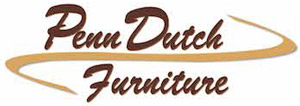Food and wine pairing when you’re hosting guests can be intimidating, especially when you’re searching online and seeing all the experts weigh in. If you’re feeling lost among the critics talking about oak undertones and tannin levels — we’re here to help simplify. Planning the perfect dinner shouldn’t take hours of research.
In this blog, we’ll cover food and wine pairings for appetizers, main courses, and desserts. We’ll also discuss tips for serving and storing it, so you can choose the best wine and enjoy a perfect dinner party from start to finish.
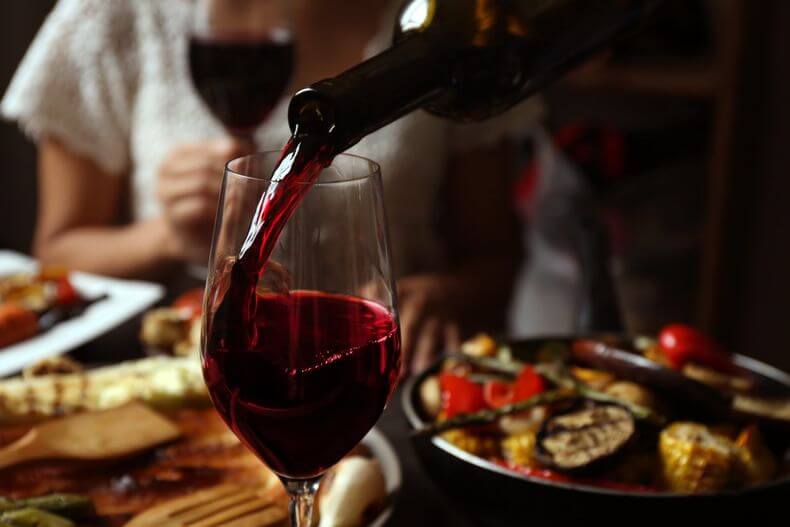
Best Practices for Selecting Wine
So where do you start and how do you pair wine with food? The easiest tip to remember is that the wine you choose needs to match the intensity and flavor of your food. For example, heavier flavored meats (any red meat) are better with red wine. Whereas, light-intensity meats (like fish) will match better with white wine.
What you’re looking to achieve with your pairing is a balance — where the wine and the food both match in richness. Generally speaking, your wine should be:
- More acidic than the food you’re serving
- Slightly sweeter than the meal
- Closely matched to the body and weight of the wine pairing menu
Above all else, remember that you and your guests’ personal tastes matter. Wine tasting can be very subjective and you should ultimately choose one based on what you know you and your guests will enjoy. It’s pointless to go with a “critic-approved” option if you know it goes against what everyone in the room prefers.
Appetizers and Wine Pairing
Now that you know the basics of picking wine, it’s time to look at the specifics. And what better way is there to start a party than with some appetizers? Serving one-bite appetizers you’ve made ahead of time is a great way to keep hungry guests at bay and also steal some more precious time getting dinner ready (we know there’s always at least one guest who arrives before you’re ready!).
While you can keep it simple and just pair together some wine and cheese, there’s certainly room to get creative with your options. Generally speaking, it works well to pair:
- Sparkling wine with crisp, crunchy, or fried bites
- White unoaked wine with spicy snacks
- Rosé with middle road apps (like charcuteries or tapas)
The combination of possibilities are endless, but below we’ve given you a head start. We’ve provided 10 popular appetizers and types of wine that go well with them.
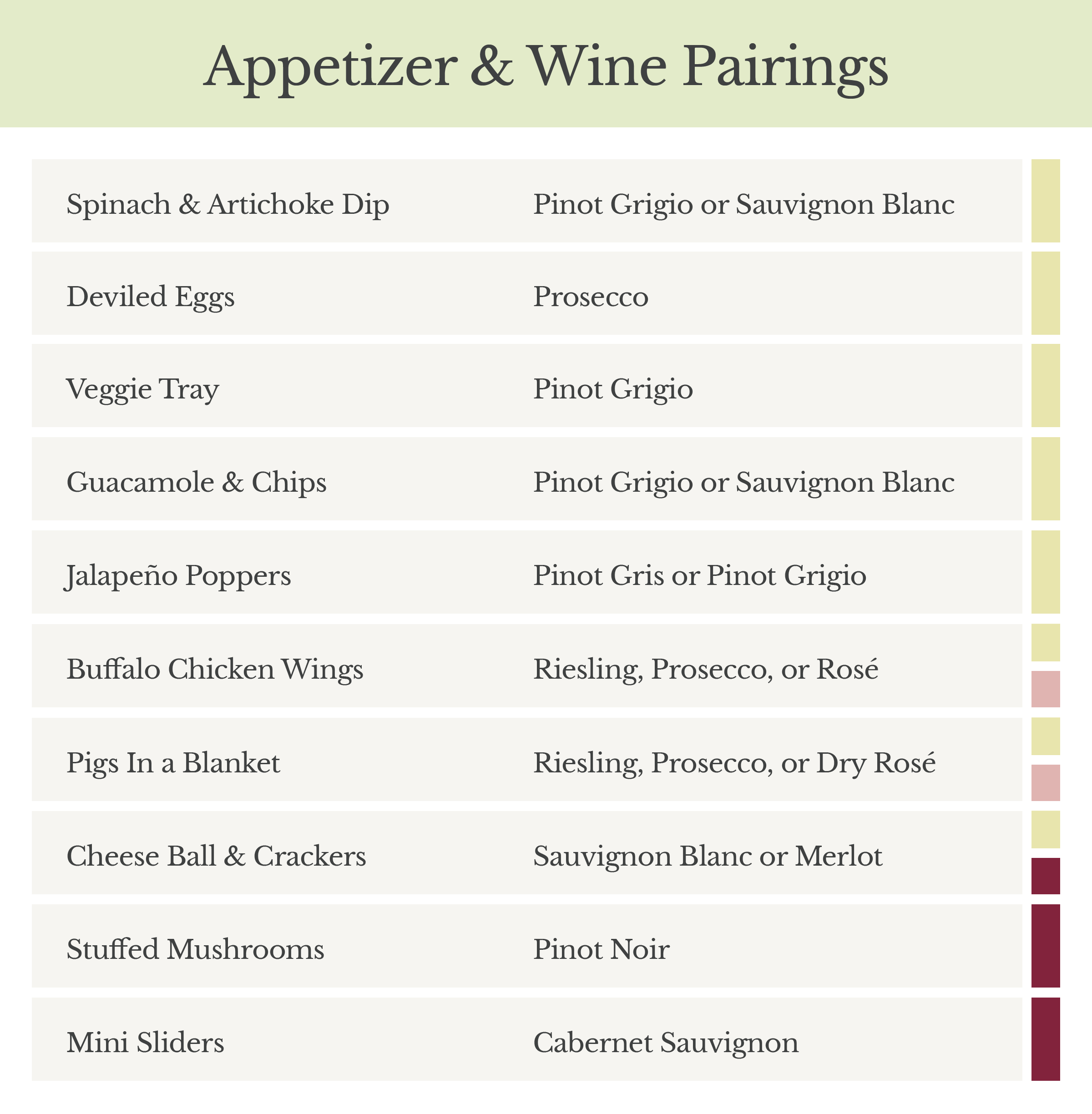
Food and Wine Pairing Ideas
If you’re opting to skip wine with appetizers and save it for the main meal, you may feel that the stakes are higher. With so many food & wine pairing options, how exactly can you figure out what to pair with red wine or find the perfect rosé pairings?
Again, this is where it’s important to keep the basics of picking wine we covered above in mind. Just remember there isn’t a right or wrong choice, especially if you simply choose a wine that best suits the palette of your guests.
When it comes to pairing it with dinner, here are the basic guidelines to follow:
- Pair lighter wines with lighter dishes and bolder wines with heavy dishes
- Know your guests’ preferences
- Use a Rosé or sparkling wine to play it safe
- Opt for sweet or semi-sweet wine if you’re serving a salty meal
- Choose an acidic wine for acidic food
Below, we’ve provided a cheat sheet with some wine dinner ideas on how you can pick wines to go with various types of meat-based entrees. We’ve also included some tips for picking wine to go with a meatless dish.
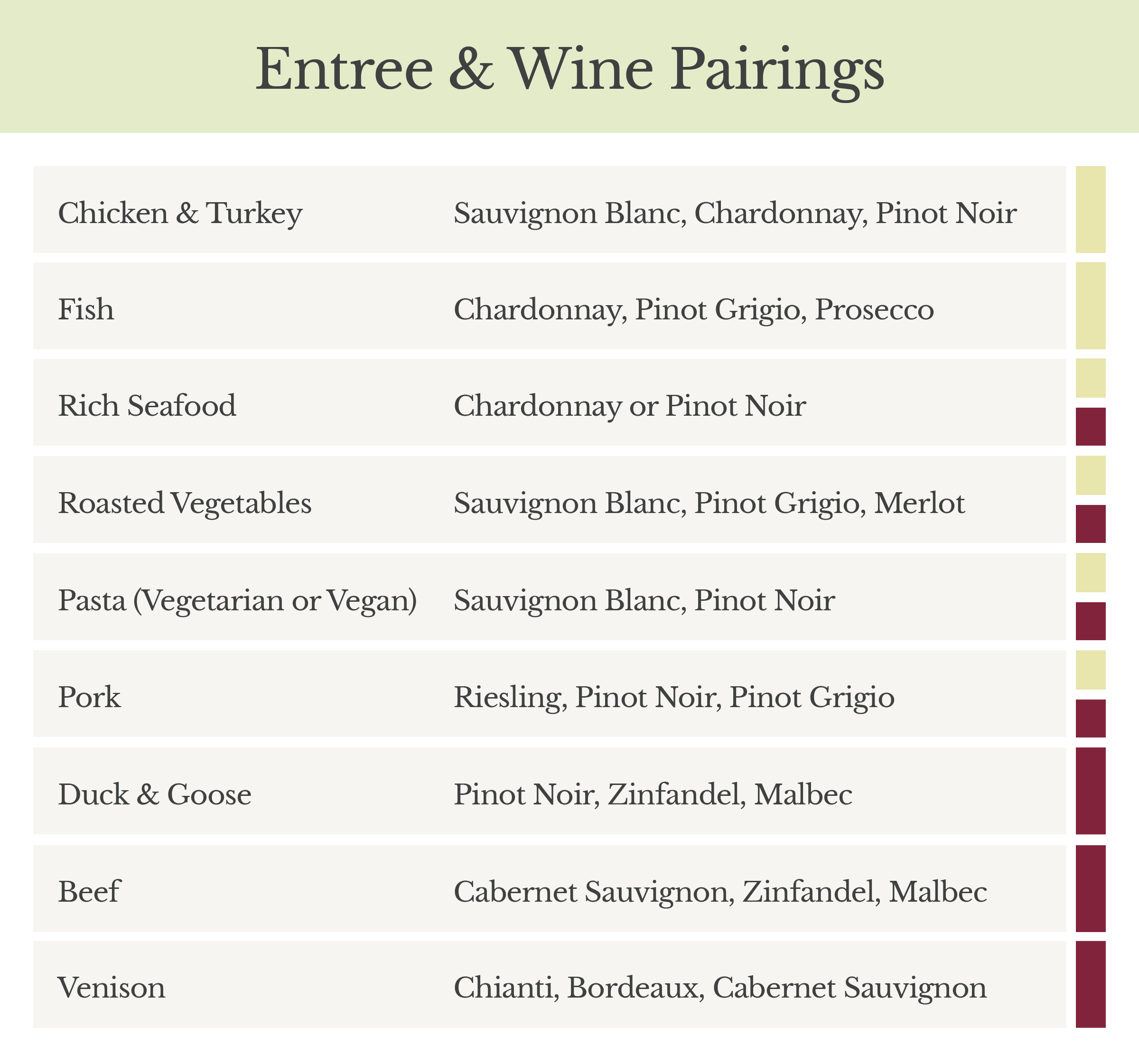
Dessert Wine Pairing Ideas
Last, but not least, it’s time to end your special dinner with something sweet! While you may think of wine working better with the appetizers or main course, there is actually a great selection of dessert wine pairing options to choose from.
Generally speaking, there are five types of dessert wines:
- Sparkling
- Lightly Sweet
- Richly Sweet
- Sweet Red Wine
- Fortified Wine
The key is to pick a type that best complements the fresh dessert you end up making ahead of time. Below we’ll break down some popular dinner party desserts and give you some ideas of what to serve.
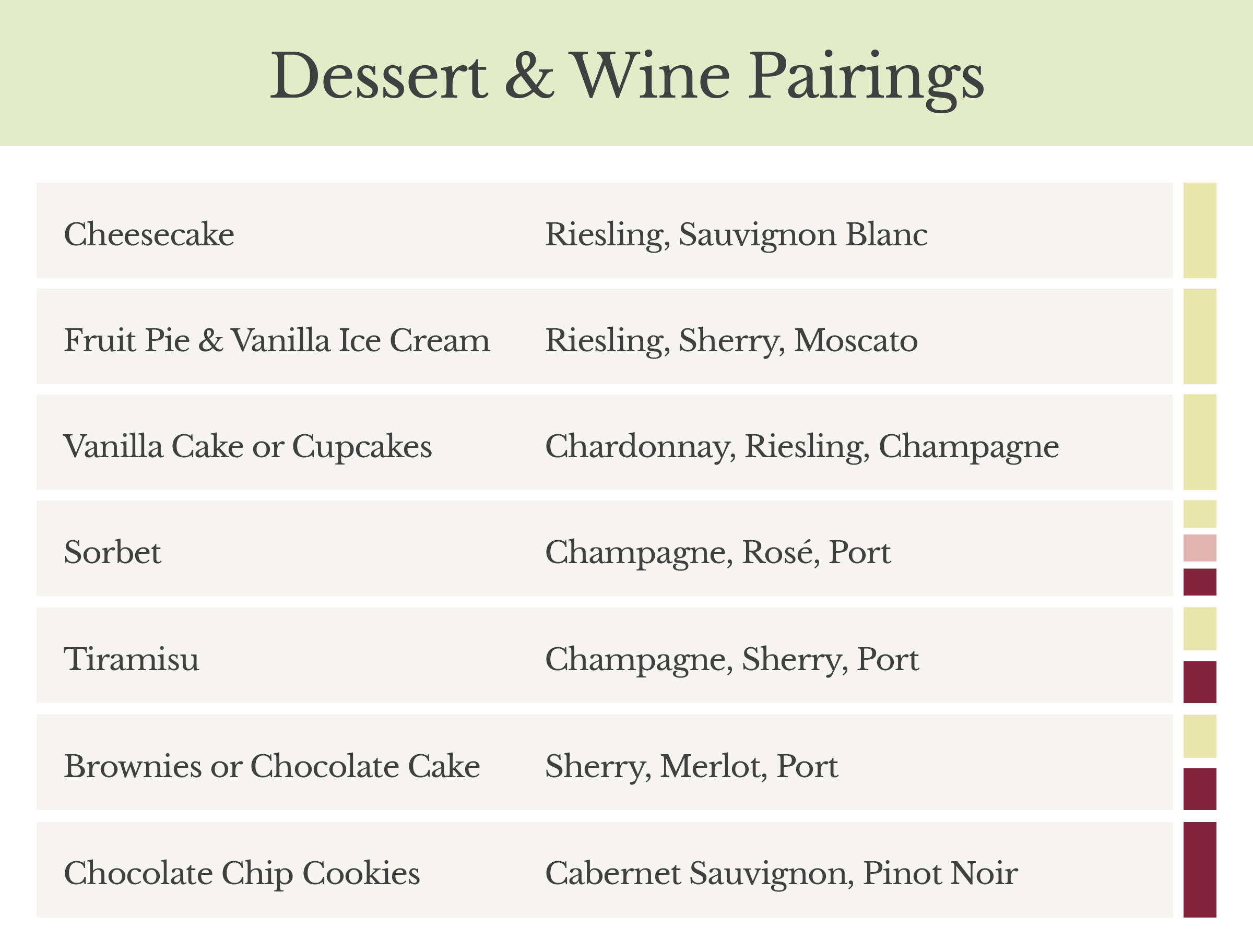
Tips For Serving Wine
Now that you have the basics for food and wine pairing down, it’s important to make sure you understand how to offer it. This is key to hosting the perfect dinner party without a hitch!
Here are our top 5 tips to keep in mind if you’re planning on supplying the wine.
1. Keep It Simple & Offer Options
You’ll likely have guests with varying taste preferences when it comes to food, and the same can be said when it comes to picking wine. Keep it easy and simple by opening 2-3 bottles so guests can choose what they like.
2. If Someone Brought Wine, Open It
It’s a common courtesy to give your host a bottle, so you may find a guest placing one in your hand when they arrive. Make sure to open the bottle and serve it along with your selection for the meal as a gesture of appreciation.
3. Set The Table Right
You may think it’s just a myth, but a study of wine glasses showed glass shape actually does matter. Different glass shapes collect aromas and air in contrasting ways and allow you to consume wine differently. This matters when you’re serving a light vs. a full-bodied wine, as some types taste best served from a specific shape.
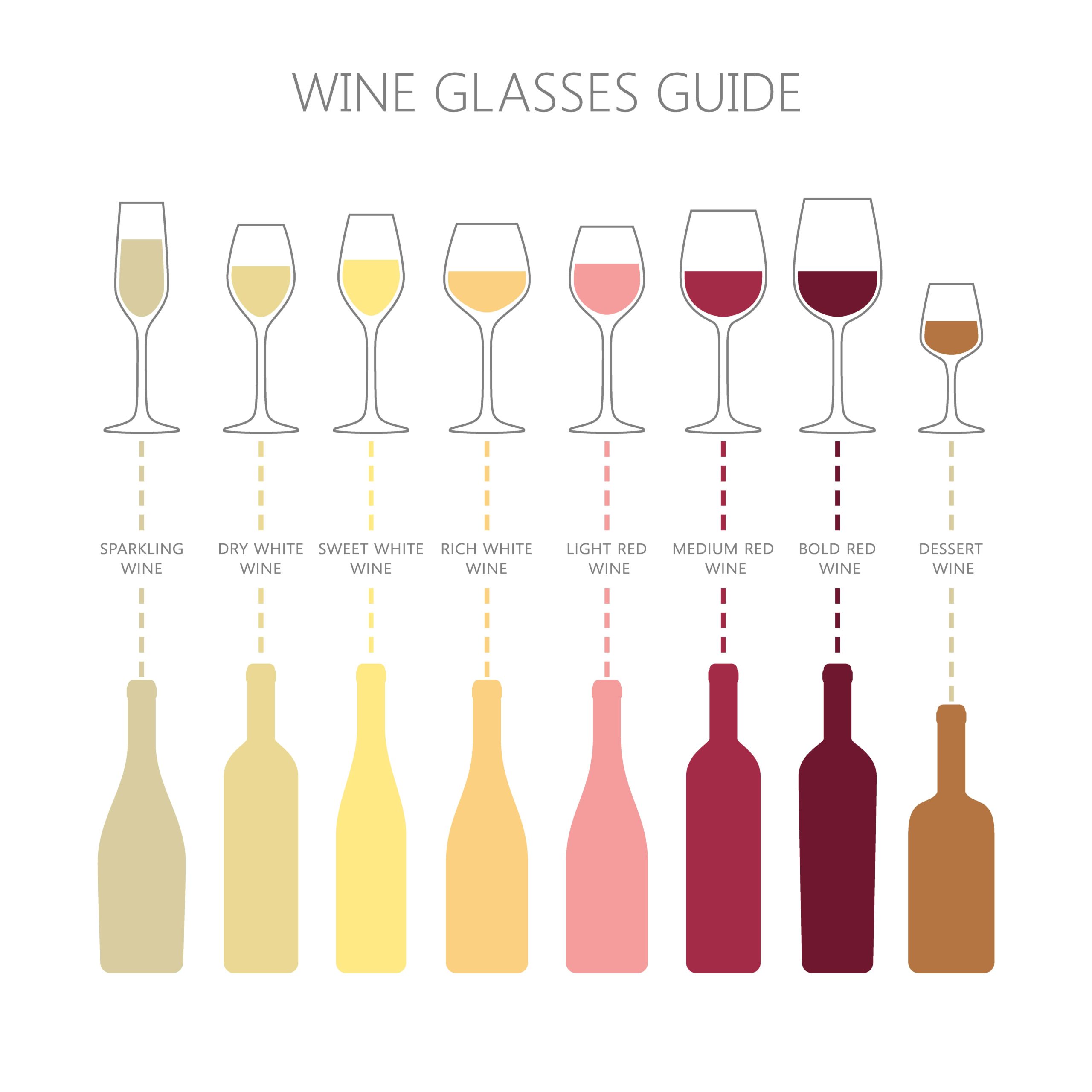
However, if we’re also being practical, you’re not a restaurant so you likely don’t have a wide assortment of glasses. Stick to making sure anything bubbly or sweet is served in a flute or elongated glass with a smaller opening. Then, keep medium-sized bowl glasses on hand for other types of bolder or dryer wines.
4. Serve at the Right Temperature
Some wines shine when they’re served chilled, while others may be muted unless they’re offered at room temperature. Here are the general guidelines for different types:
- Red & fortified wine: serve between 55°F – 65°F
- White & rosé wine: serve between 45°F – 50°F (Put in the fridge for 2 hours)
- Sparkling wine: serve between 40°F – 50°F
Once you have your wine, store it in the fridge preemptively, and then just take it out ahead of your dinner party, giving it enough time to reach the right temperature.
Additionally, consider aerating your wine if it’s a young red. Doing so can drastically improve the quality of its taste to make it smoother and more delicious. Aeration mimics the process that highly aged wines (which are typically more expensive) undergo and allows you to transform your younger wine into a higher-quality option.
5. Store Leftovers Properly
You’re cleaning up from the night and patting yourself on the back for successful food and wine pairing after seeing off your happy guests. However, you likely have some leftover bottles. Make sure they don’t go to waste!
First, consider pouring any wine into a smaller bottle to minimize its exposure to air, which will flatten it. Then, make sure you cork the leftover wine. Last but not least, regardless of what type it is, store it in the refrigerator. Cooler temperatures ensure the wine’s breakdown process is slowed down, so you can enjoy it longer. And as you’re enjoying a glass a few days later, start thinking about what you’ll do differently the next time you decide to host your wind pairing dinner again!



